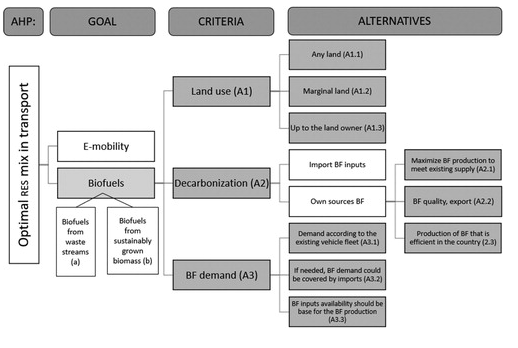Positioning the biofuel policy in the bioeconomy of the BioEast macro-region
Open Access article in the Journal ‘Biofuels’, available at https://www.tandfonline.com/doi/full/10.1080/17597269.2021.1984165
The article summarizes a study carried out in the frame of IEA Bioenergy Task 43 (Biomass Feedstocks). It outlines and reviews the concerted biofuels’ policy for transport in the BioEast* region, which includes 11 countries in central and eastern Europe. Concerted policy occurs when the policy topic exceeds the authority of a single ministry and several sectors must engage to develop a policy. Biofuel policy is a typical example of a concerted policy as the energy sector sets the quantity of demand (e.g. mandated share of biofuels), transport sector sets the quality of demand (e.g. what kind of features a biofuel should have to meet the existing demand, vehicle fleet and infrastructure) and agriculture, forestry and waste sectors are supplying biomass to produce biofuels. Implemented measures should aim to make the best of the increased biomass demand and gradually transit to circular and sustainable bioeconomy, supported by a gradual, adaptive and innovative governance approach that allows policy learning.
The paper outlines and reviews the possible outcomes of concerted biofuel policies in the BioEast macro-region countries resulting from the expressed preferences by national stakeholders. It addresses the current preferences and directions in the biofuel policies in the area, the consensus in biofuel policies integrated among the different countries and the assessment of the biomass supply and biofuel demands based on the responses. The approach involves the policy makers directly in the trade-offs and commonalities in between the sectors which later allows higher quality in inter-ministerial discussion. Policy preferences collected from relevant government representatives of the BioEast region are analyzed using choice architecture and fuzzy Analytical Hierarchy Process, with a ranking related to land use, decarbonization and development of a national market.
The results demonstrate a great variation in the priorities for forming and implementing biofuel policies in the region, strongly related to national realities (e.g. available land for biofuel production, target fulfilment). Countries delaying in their biofuel targets aim at policies that fulfil internal demands without considering other criteria related to land use issues and own sources. The results show a general agreement (95% consensus) of having about 66% of renewable energy in transport covered from biofuels resulting from domestic biomass supply. Yet, there are differing preferences in the policy options at country level, which makes a single consensus policy for the macro-region challenging. Finally, the results highlight the different degrees of policy intervention that are implicit in the policy preferences of the national decision makers.

Figure: Embedded hierarchy of biofuels’ policy in choice architecture for concerted policy (grey cells represent Analytical Hierarchy Process hierarchy)
*In Central and Eastern Europe, 11 countries (Bulgaria, Croatia, Czech Republic, Estonia, Hungary, Latvia, Lithuania, Poland, Romania, Slovakia and Slovenia) have organized themselves within the Central-Eastern European Initiative for Knowledge-based Agriculture, Aquaculture and Forestry in the Bioeconomy. The BioEast Initiative offers a shared strategic research and innovation framework for working towards sustainable bio-economies in the region (see: https://bioeast.eu/). This macro-region entails large amounts of productive agricultural and forest lands, but also underutilized biomass potential, insufficient infrastructure and missing links between industries. The BioEast Initiative considers bioeconomy as a chance to reduce the internal EU’s disparities by expanding knowledge base and supporting evidence-based policies.
Citation: Biljana Kulišić, Ioannis Dimitriou & Blas Mola-Yudego (2021) Positioning the biofuel policy in the bioeconomy of the BioEast macro-region, Biofuels, DOI: 10.1080/17597269.2021.1984165


